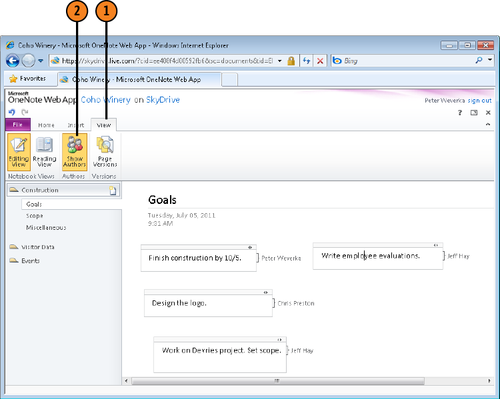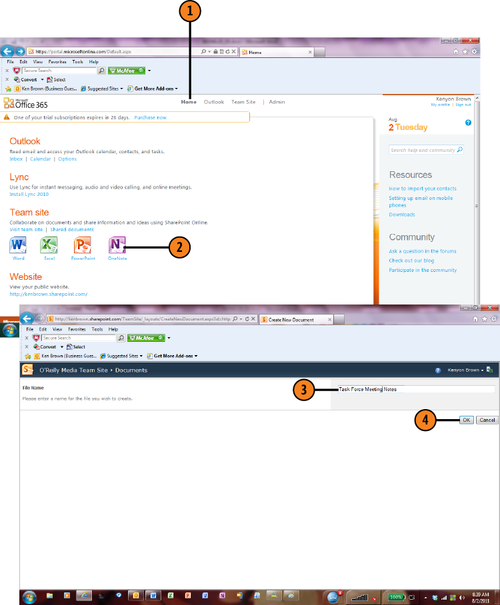1. Finding Out Who Wrote Notes
Any number of people can
coauthor a notebook on Windows Live. What’s more, they can write notes
at the same time. And some of them can be working in OneNote Web App and
others in OneNote 2010.
When several people coauthor a notebook, how can you tell who wrote which note? Go to the View tab and click the Show Authors button. The names of authors appear beside notes.
1.1. Find Out Who Wrote Notes
Click the Show Authors button.

2. Using OneNote Web App in Office 365
Microsoft
Office 365 is a subscription service from Microsoft that permits you to
store files on the Internet and collaborate with others using
Office Web Application software (OneNote Web App included). Users have
email capability, can use a calendar, and can keep a Contact list.
To run Office Web App software
with Office 365, you open your web browser, go your Office 365 site, and
give commands through your browser to operate the software.
2.1. Creating a Notebook
To create a notebook, start on
the Home page and go to the Teams Site section. Then click the OneNote
icon, enter a name for the notebook, and click OK.
Notebooks you create at Office
365 are available automatically for sharing. You don’t need to choose an
option to share notebooks with others.
Use these techniques to open and close notebooks:
Open a notebook: On the main Office 365 page, click Shared Documents and then click the notebook’s name.
Close a notebook: Click the File button and choose Close.
2.2. Create a Notebook
Enter a name for the notebook.

2.3. Exploring OneNote Web App in Office 365
OneNote Web App in Office
365 doesn’t offer all the commands found in OneNote 2010. Nevertheless,
if you need a favorite command from OneNote 2010, you can open your
notebook in OneNote 2010 starting in the OneNote Web App.
To write a note, double-click on the screen and start typing.
OneNote Web App offers
three tabs on the ribbon: Home, Insert, and View. Create a new page or
section starting on the Insert tab (or click the New Page button on the
Navigation bar to create a page).
Starting in OneNote Web App in Office 365, open a notebook in OneNote 2010 with one of these techniques:
On the Home tab, click the Open in OneNote button.
Click File and choose Open in OneNote.
On the View tab, click Reading View and then click the Open in OneNote button.